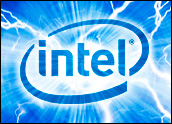
Just one month after setting a new processing speed record with its Larrabee project, Intel has shelved plans to put out a new graphics chip based on that technology.
Instead, it will use the technology as a software development platform for internal and external use in high-performance computing.
However, Intel has not killed plans for Larrabee-based graphics chips entirely. “Additional plans for discrete graphics products will be discussed sometime in 2010,” Intel spokesperson Nick Knupffer told TechNewsWorld.
What Is Larrabee?
Larrabee is a new microarchitecture developed to meet the increasing compute and memory demands of the latest PC games and high-performance computing applications. The architecture is highly programmable. It has multicore throughput and lets developers implement various 3-D graphics pipelines such as rasterization, volumetric rendering and tracing.
Platforms built around the Larrabee microarchitecture will operate across a unified infrastructure that includes other components based on Intel programmable cores. The idea is to combine Intel’s x86 architecture with graphics processor capabilities.
Intel’s plans to bring out Larrabee products have suffered repeated delays. It was last slated for release in 2010 as part of a consumer 3-D graphics accelerator product.
Initially, Intel had planned to offer a Larrabee product for sampling in 2008. Then it pushed back release to Q4 2008, and then 2009 and later 2010.
“I can’t attribute Larrabee’s delay to one thing,” Jim McGregor, chief technology strategist at In-Stat, told TechNewsWorld. “Intel was trying to develop a new hardware technology with a new software programming model, which is a very complex task.”
Few new technologies make their initial schedules, McGregor said. However, Larrabee has been a “huge disappointment” for Intel, he pointed out. “They were shooting at a moving target while trying to convince the market to change,” McGregor said. “I think they underestimated the competition and the task while overestimating the ability of the market to change,” he pointed out.
“Graphics chips are a lot harder to work on than people think,” Carl Howe, director of anywhere consumer research at the Yankee Group, told TechNewsWorld. “Real graphics processing is messy, and Intel thought it would have an easier time in dominating the market than the two guys who are already there — Nvidia and ATI, now AMD. Those two guys dominate the messy part.”
Flip, Flop and Fly
At the supercomputing conference SC09 held in Portland, Ore., earlier this year, the Larrabee chip beat the 1-TFLOP barrier. This set a new record, badly beating out graphics processors from Nvidia and AMD.
Having achieved that landmark performance, why would Intel flip and decide to focus on making Larrabee a software platform, at least for now?
Perhaps because it needs to maintain a presence in the GPU arena, as graphics processors are considered to be the next wave in computing. For example, the Oak Ridge National Laboratory plans to build a new supercomputer based on “Fermi,” the next-generation CUDA GPU architecture from Nvidia.
“Graphics are important in so many of the markets Intel is targeting that it couldn’t stop efforts in graphics even if it wanted to,” In-Stat’s McGregor said. “Intel has one graphics effort for embedded graphics — Gen; one for consumer products, PowerVR; and Larrabee for discrete GPUs.”
The switch to making Larrabee a software development platform means Intel will not unveil its first Larrabee products next year, as announced at the Intel Developer Forum 2009 in September. These products would have been graphics cards.
At IDF 2009, analysts were already skeptical about Intel’s ability to deliver on its promises for Larrabee. “With Intel, you want to listen to what they don’t say, and one thing they didn’t talk about at IDF was Larrabee,” McGregor pointed out. “Intel wouldn’t even take any questions on Larrabee except to say that it would be introduced in mid-2010.”
Cracking the 1-TFLOP barrier at SC09 opened up new options for the Larrabee project. “The performance of the initial Larrabee product for throughput computing applications as demonstrated at SC09 is extremely promising,” Intel’s Knupffer said. “This is why we’re making Larrabee a high performance computing software development platform.”
Intel’s changing gears on Larrabee is not unusual for a project aimed at bringing out a new chip, said Yankee Group’s Howe, who is an electrical engineer. “Chip design is like designing this really big software program, but you only get three compiles because you only get to make the silicon wafer so many times at several hundred thousand dollars a try,” he pointed out. “By the time you get to the second try, people start looking at profit and loss, and more often than not they decide to drop the project.”
The Larrabee project is more an indication of Intel’s strength than its weakness, Howe said. “I’d be more disappointed in Intel if they didn’t have a few failures, because that would mean they weren’t taking any chances,” he explained.





















































